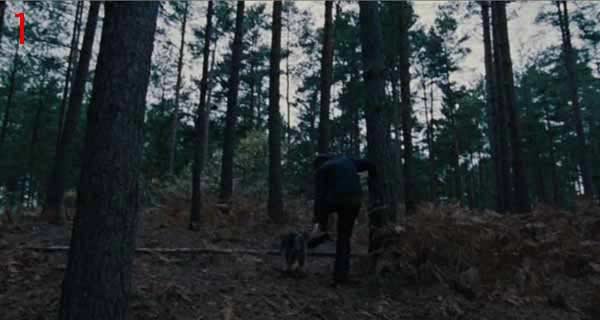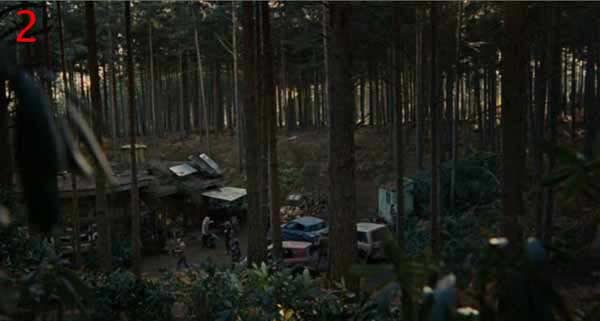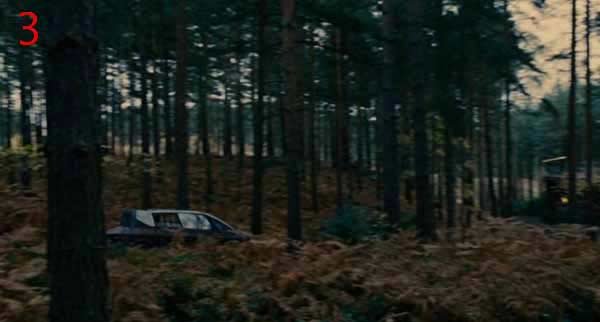
Arvin Farahmand
Basic Member-
Posts
14 -
Joined
-
Last visited
Profile Information
-
Occupation
Director
-
Great! Thanks for the info.
-
I've seen that film. I'm sure if you dig up the relevant ASC article it can help you a lot more than my memory can, but it looked to me like a combination of two things. The background was kept a few stops under key and the actors were about 1 1/2 stops over key; mainly their upper body and face. The main light sources were always from the above and off screen (motivated by street lamps) but these lights were cut to pretty much only fall on the actor and spill was minimized -- hence the upper body and face were lit higher than say legs. The lighting was augmented with the fact that the actors mainly wore mainly white. Together they served to separate them from the background. The *halo* was added with a pro mist filter on camera, or some other diffusion filter. This effect is further exaggerated by the actor, background separation as I noted above. *Mist* type filters work best when there is a dark/light separation (compare the street scenes with the scene in the drug dealer's pad). They may have also netted the back of the lens, but I'm not sure. I'm only going by my own observations here. If you want more examples of this type of effect, watch Atonement. The first half of the film is rife with it.
-
Hello, I'm wondering if anyone here has experience with Cinetape system. Is it worth the extra trouble? An AC has requested it for an upcoming shoot but she hasn't used it before and I want to know it is as good as advertised or are there pitfalls? Experiences and anecdotes are much appreciated.
-
It still seems to low for a starting price. Wait and see I guess.
-
Am I the only one who thinks there is something very amiss about this: (eBay Item number 330133845765) http://cgi.ebay.com/AATON-LTR-7-16mm-CAMER...1QQcmdZViewItem I can't imagine a working LTR7 plus film and everything else he is throwing in there for that price. Something tells me this "fell off the back of a truck" <wink> <wink>.
-
They look really good Kevin. What did you shoot with? What monitor are those stills off of? Also, a small note/question: In the fourth picture (with the girl crouching by the pool) on top of the frame I can make out the bottom of light stands, possibly stand bags, and the harsh shadows that PARs seem to be casting. I'm guessing this is just a random still with parts of the set showing and not actual footage, correct? If this is actual footage, what is that supposed to be, and what is the motivation for such a low angled harsh light? (sorry for sounding obtuse but I'm just picky with details)
-
Current Stocks/rich blacks/lush night
Arvin Farahmand replied to edward read's topic in Film Stocks & Processing
Hi David, I have a small question about overexposing 2/3 (i.e. rating the stock slower than it is). Do you overexpose and then pull the same amount on neg development or do you overexpose and just print it down (time it down) by 2/3 when getting your positive prints? I've always gone the printing down route myself, but I had a discussion with a DP who said he prefers to just pull it by 2/3 during when getting his neg developed. To me that almost defeats the purpose because the whole point is to get more silver halide activation and a denser neg. Granted once the halides are activated they would release more color dyes at the same time, by pulling should inhibit some of that richness -- correct? -
If you are in Toronto, try Stock Options Corp. Their rate on 16mm short ends is about $0.20, which is fairly decent. I've used them a few times and haven't had any problems -- yet. If not you can always call production companies and see if they have any short ends left but they tend to mostly have 35mm and quite often they sell them to companies like Stock Options. When buying be sure you are buying the correct winding (if you need S16 for example).
-
Replicating a forest on a set
Arvin Farahmand replied to Arvin Farahmand's topic in Lighting for Film & Video
It just jumped out at me as being a little too perfect, and then there was that photo of the set piece... I'm beginning to also think that it must have been geography + time of day that gave such a consistent separation between the two planes. -
Replicating a forest on a set
Arvin Farahmand replied to Arvin Farahmand's topic in Lighting for Film & Video
There is quite a bit of distance between the trees and the mountain in that photo you posted. In CoM he basically has the front two rows of trees about 2 stops less than all the other trees. The distance is less. Also the mountains have snow on them so naturally they reflect more light than the trees would and hence easier to separate by exposure. The thing that struck me the most, and led me to think that it must have been studio or otherwise artificially lit, was that the foreground exposure was uniform. Except for minor tonal variations in color they are all pretty much at the same stop (+/- 1/2 stop I'd figure). In one shot, where the camera looks up, we see that the trees don't have very big leaves so naturally there is bound to be quite a bit of sun leakage through them and onto the ground (assuming 10AM-5PM light). There is also the wind factor, as we can see the trees in the background sway a bit yet there wasn't a hint of dancing patterns of light on the actor's face. The only other thing I can think of to achieve this would be something special with the geography and the time of the day they shot that sequence (with the angle of the sun) that puts the trees in the foreground in a semi shadow but still shines light on the trees further off. Any imperfections were flagged or silked to give it that uniform feeling. Anyhow it looks great to me. It just felt too perfect to have been done outdoors. -
In a basic DI process your film is scanned by a machine, attached a time code, and then written out to tape (D5, HDCAM, D-Beta, etc.). You can grade, color, play with contrast, pan and scan, do what you need right off the transfer or later off the tape (except the pan and scan part). From there on, it depends on where you want to go. If it is a film festival you are going to 9 times out of 10 they'll take a tape (often HDCAM) over a print -- which is more expensive than tape and more liable to tear or get lost. You can always go film-out and have the tape "printed" onto 35mm film for projection. That is a rather expensive proposition. I wouldn't do that unless I had a pretty good reason to do so. The post facility can also give you the data as series of images, or an mpeg video, or some other format on a hard drive but that takes quite a while -- at least 4-5 times the running time, if not more. Basically you are looking at about 6 MB per frame, for 142 MB per second of film. You can also go straight to DVD from the tape. I advise you ato lways keep your tape masters because it costs a lot of money to transfer everything and regrade things if you decide to make a change. If you want something stylized, it is best to first do a transfer to tape with all the information preserved (i.e. nothing crushed or blown out for effect) and then apply the effect you want and put it on a different tape. Tell your colourist that you want a digital negative with all the info preserved and he'll set things up so nothing is clipped. The little bit of money that you may save by reusing tapes is very small compared to what you'll pay to redo things -- and trust me you will want to try out different things. Also, D-Beta is standard def. I'd go to a D5, or an HDCAM to get a decent high-def transfer that you can later print to film if you choose to do so. Besides HD-DVD and Bluray are around the corner and I'd rather have my film in HD at the end rather than SD. You won't need 2K or 4K transfers. Those are mainly for special effects shots and are rather expensive. They won't transfer to tape. They have to go to a hard drive. Even if you have a special effects shot, I'd still pull the plate off a tape transfer (1920x1080 if you go HD) and not go the 2K route. Word of advice -- avoid going back out to film to save a lot of money. There is really no good reason for you to go back out to film unless you have already secured a distribution agreement for your film in which case the distributor often takes care of striking your prints anyways.
-
Replicating a forest on a set
Arvin Farahmand replied to Arvin Farahmand's topic in Lighting for Film & Video
That's what I'm trying to confirm -- if they in fact shot all in studio or was there any piece shot on location? I can't imagine how you'd pull of that dark/light effect on location without a ton of silk or lights... any ideas? -
I've been interested in knowing how a certain effect in "Children of Men" was achieved. I think I've found out how, but some pieces of the puzzle just don't quite mesh. I am talking about the forest outside Jasper's (Michael Caine's) home. We see this piece about three to four times in the movie, and it always seems as if the trees further off in the background are brighter than those in the foreground. This motif is something that Lubezki uses a lot in this film (just look at the plants in the background in the first scene where Caine and Owen are having a conversation in Jasper's home). I always wondered how he managed to pull this off, in an exterior no less. At first glance, he would have to either use a lot (a ton) of silk/diffusion to cut down the light from the sun and diffuse it consistently like overcast in the foreground trees or put a hell of a lot of light on the trees in the background, something which given the size of the wide shots is quite impractical. He'd have to blanket the whole forest with it. But then I came across these pictures from the set: http://outnow.ch/Media/Img/2006/ChildrenOf...=912&h=1400 http://outnow.ch/Media/Img/2006/ChildrenOf...=1400&h=912 http://outnow.ch/Media/Img/2006/ChildrenOf...=1400&h=912 Clearly the forest is all a set. This would make it possible to have all the 'trees' in the background (or rather the light behind the backdrop) about 1.5 to 2 stops over exposure, while keeping everything in the foreground at an even diffusion (Picture 1 and 3). I could buy that it is just a really good set. But look at the parallax when the car pulls into Jasper's home. It doesn't look like a set to me. This part looks like location. My other problem is that, in one instance, at about 1:06:00, when Owen is walking in the forest (a few moments before picture 1) the camera pans up and we can see the top of the trees and the sky. Also when The Fishes arrive at Jasper's (Caine) home it is clearly early morning and the sun, well looks like a real sun, and not something that you can create on a set (Picture 2). So if those scenes are done in a real exterior then why create the set!?? If it is all a set, then what about the sun and the top of the trees and the sky (OK, I could buy the top of the trees being CG)? If some parts are location and some set, then how did he achieve that light and dark effect for the location part? I also noticed that the one other forest scene that is undoubtedly a real exterior and must have been shot on location doesn't follow this dark foreground, bright background motif. I am talking about the scene where Julian is buried (Picture 4). This makes me believe that they had to create the forest set just to give Lubezki exact control over foreground and background lighting -- why else would you need that set?! Nothing else happens there! I'd appreciate any input.





